Healthy eating principles
Constructing a diet plan is not easy. You got to be able - and this goes without saying, to differentiate between the properties of ingredients, and how the body responds to different types of food. On top of that there is quantity, combination, balance… That’s a lot of info to process if you’re unfamiliar with nutrition.
This guide, therefore, will provide the necessary backbone - the proper framework - on which you’ll build your diet program.
You will learn about the guiding principles first, familiarize yourself with the building blocks, and then learn about ingredients and how to combine them.
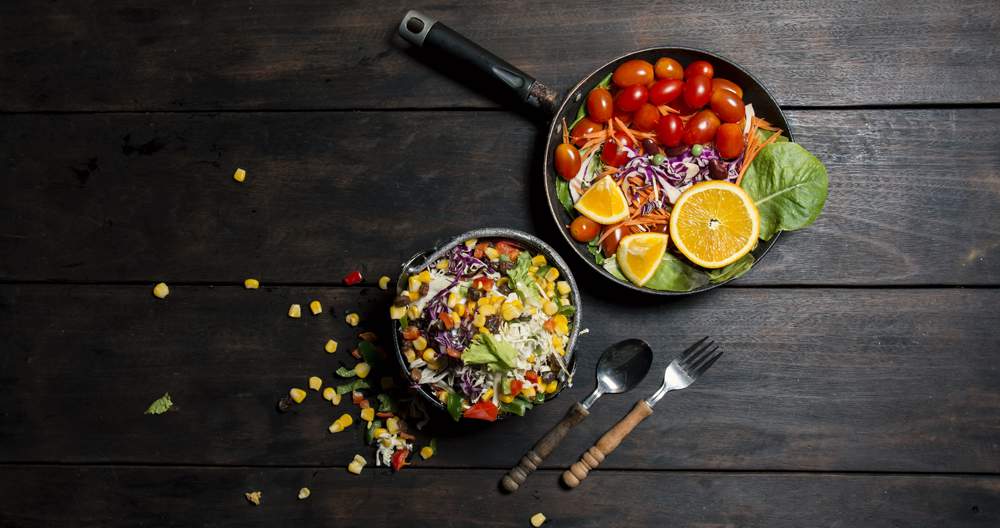
Know this - fitness works, more or less, in tandem with nutrition. So if you want to sculpt your body the same approach applies - informed, intentional, planned upfront.
And because I understand all too intimately the frustration associated with the challenge of eating healthy, here is a reassuring tap on the shoulder - you’ll love the simplicity of this guide and the program that comes out of it.
And it’s not about fitness either. Paying attention to diet by having a structured approach will take care of your health as well. Because unfortunately, in real life, ominous music rarely plays before shit hits the fan.
The diet plan you are going to build
The users of Fitness Updated, along with a library of video workouts, have nutrition sorted out for them as well. What and when to eat, multiple choices daily, as well as recipes which are tasty and pragmatic.
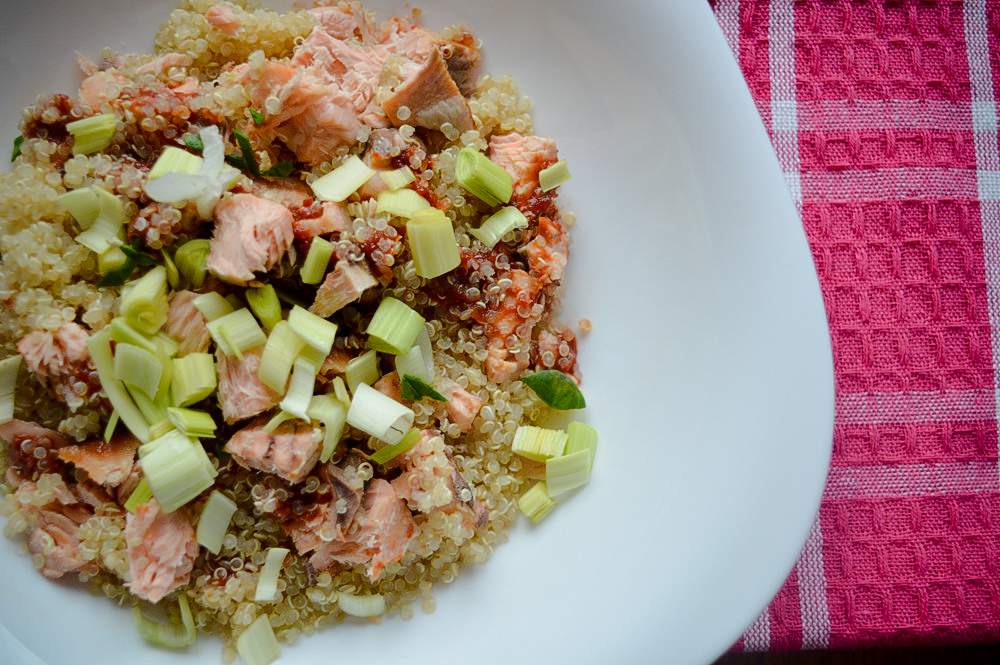
There is also the algorithm that receives feedback and improves their experience (both workout schedule, and nutrition).
If you haven’t checked the platform, just use the 7 day free trial and see how it goes.
But here is the truth… The diet plan we’ve created, though not replicable in its entirety, is easy to recreate to an almost identical version when it comes to efficiency.
This guide will get you there.
Few things to have in mind before you continue though:
- Once created, the diet plan is not complex at all
- It is not expensive
- Passionate about efficiency, we made sure it’s not time-consuming either
You also have to understand the importance of sustainability. If it’s creating discomfort and failing to provide balance it’s not going to be sustainable on the long run.
So we’ve included a couple of tricks to make sure you stay on track.
The key principles and the main building blocks
The first thing you’ll have to pay attention to is setting up the frame. Main meals and snacks.
And within this frame, you will drag and drop combinations of ingredients.
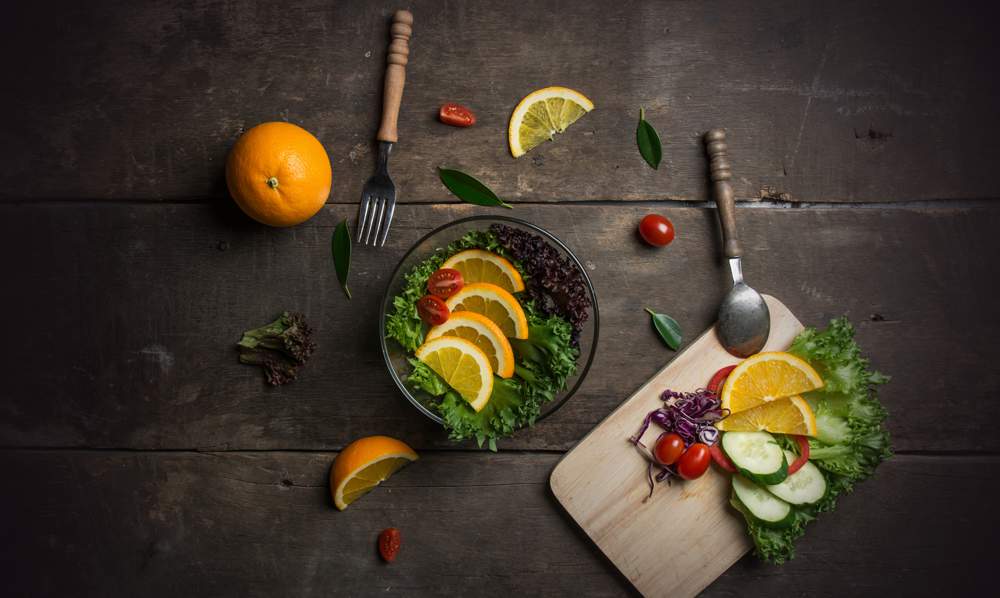
Why is this frame important?
First of all, because you will need a certain amount of food daily, and the optimal way is to distribute the consumption throughout the length of your day.
Failing to distribute properly, even the healthiest food can make you gain weight.
Second - and this is important – if you want your muscle mass to grow, you will need to feed the muscle throughout the day, and balance your carb consumption according to energy expenditure.
3 main meals and 2-3 snacks
So it’s Breakfast – snack – Lunch – snack – Dinner (and maybe another snack depending on few circumstances).
And before we draw a rough skinny on when in the day exactly, and what these meals and snacks are going to look like, let’s talk about the building blocks in your diet.
Protein, Carbs, Fats…
You will choose and combine food based on how much of these there is inside.
So for example, while meat and fish are packed full with protein, grains are an excellent source of carbs. Fats (the healthy variety- and you will learn which) can be found in nuts, seeds, some types of oil and few other sources we will list below.
The main meals and the snacks respectively, will need to include somewhat different quantities of these each.
So it goes…
Your Breakfast, ideally, should not start later than 30minutes after you wake up. And since it’s the beginning of the day, you will need more carbs in order to have more energy. While fats stay the same, protein consumption can be slightly lower.
Two hours later, there is the first snack. Ideally, it should include protein and maybe some fat. But don’t stress about it at this point.
Lunch is also two or three hours later, and it will be heavy on protein, and somewhat lighter on carbs.
Three hours later there is the second snack. Now depending on your workout timing, it can be more protein rich, or just something to keep you moving (think fruit).
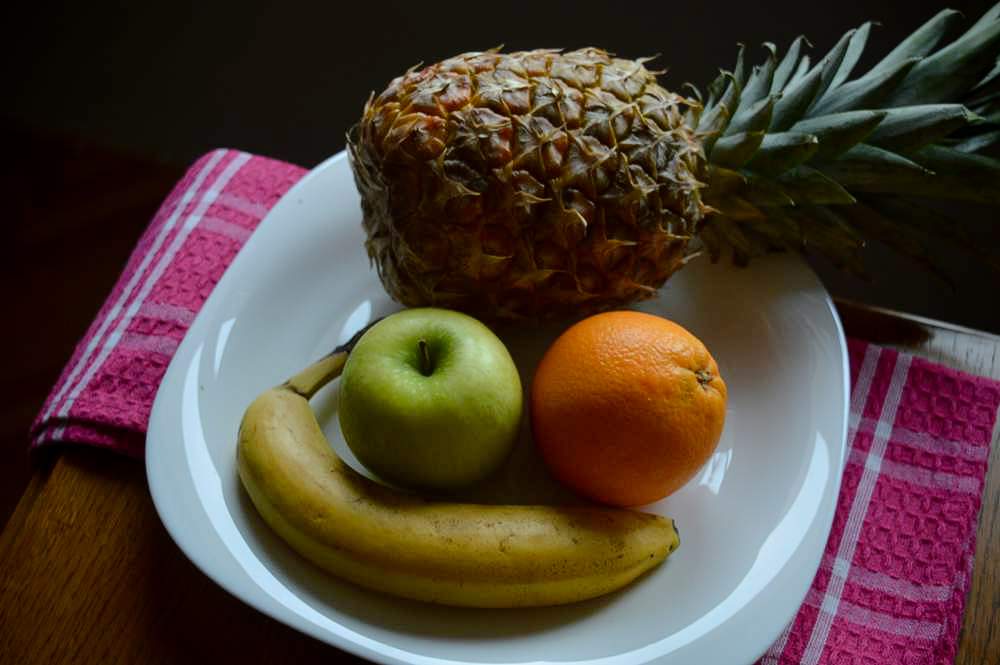
Then, later, around three hours (or more) before bedtime, there comes dinner. Still heavy on protein (not as lunch though), and way way way lighter on carbs.
And additional snack may be placed according to energy needs, as well as daily workout stats. Mostly, if you feel hungry and the clock has yet to reach bedtime, veggies are ideal.
Included within the ingredients, there must also be fiber, vitamins and minerals.
And… as a glue to keep this safe from falling apart, some old habits, self-indulgencies, or your definition of fun when it comes to food (more on this below).
With all of that in mind, let’s start creating the blueprint.
The diet blueprint
One advice I’ve heard about nutrition, that is dwarfing all others in significance, is being able to pronounce all the ingredients inside your plate. This is to make sure you are aware of what you have in front of you, and to minimize overly-processed food.
That’s why the paleo diet is so effective. You can name your protein source, your carb source, and your fats source. Easy.
Eating clean translates into less processed food, and more ingredients that you can recognize and pronounce.
But… first thing first, let’s get rid of setbacks
There are two reasons why you can fail short in your attempt to eat healthy, and they are related:
- You forgot or didn't have time to prepare a meal, and you don’t have anything to eat
- This forces you to reach for the unhealthy variety
Another variation of this is when you stay late and energy levels are in a desperate need of fuel and you crave sugar or overly processed food – so stay smart and rest when you need to rest. You must pay the sandman, no way around that.
Now, to make sure these never happen to you, there is a smart fix. And this is going to sound simplistic.
Never buy food that is outside of your list. If there is no such food home, you cannot eat it. Simple.
Additionally, you’d like to plan upfront and sometimes even bulk prepare things so there is always something healthy within hand’s reach when you are hungry.
Take the list attached below, and do your shopping in bulk. Prepare the same way too. Especially have your carbs and protein sources always in storage.
And for starters, forget about perfection. This here is a habit… a skill if you like. As you enter the routine, it will become intuitive.
Thinking small guys, one step at a time. It will help you make this whole thing sustainable as well. Start now, and iron out the flaws later.
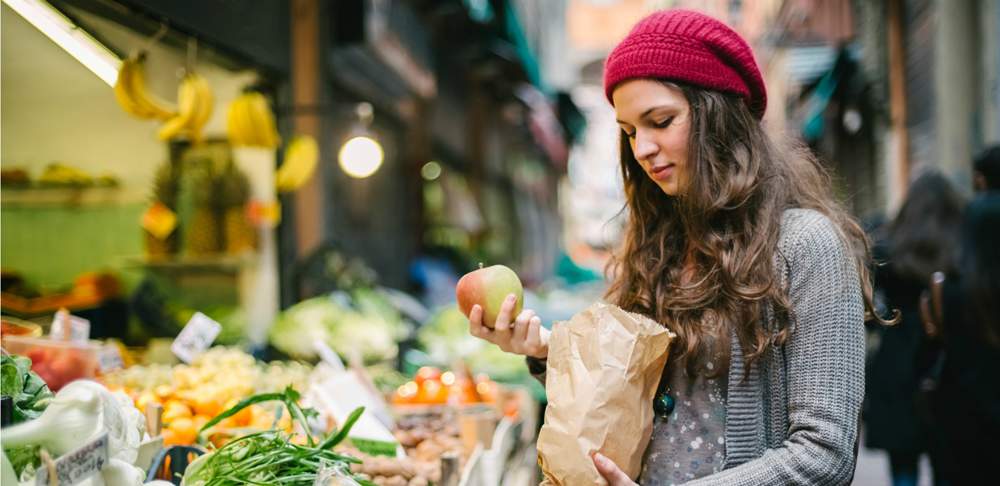
It’s no wonder people bounce back from initial attempts to eat healthy. When you strive for perfection, predictably, it becomes an exercise in frustration. Wrong setup and the odds against success prove overwhelming. That’s why we are going to make it simple.
Forget calorie counting, but rely on feelings instead. Your body will give you clues and you will learn how to read them. It’s inevitable. Hydrate regularly, don’t stay up late…
People overestimate what they can do in one week, but underestimate what they can do in a month.
But what about measurements? What about ounces, pounds?
I can give you a formula if you like (and we have one incorporated within the platform). But let’s put it simple for now - two handfuls of your carb source, and one of your protein source on each meal. The fats come naturally, and maybe a slight supplementation is needed for your breakfast (a teaspoon of peanut butter or tahini). Snacks are for fruit, nuts, and the occasional supplementation.
Deducting - slightly less carbs for lunch; minus one handful for dinner.
Here is a list of what not to consume
Have in mind that it’s not written in stone. Unhealthy food exists on a spectrum, and so too the ways in which you can sabotage your progress. Treating yourself once or twice per week won’t change much. If anything… As long as all unhealthy habits are less than 10% of your main diet choices within a week, don’t overstress.
- Alcohol (again, a toast once or twice per week is not detrimental for your success)
- Fast food (once a week, anything goes. But keep it down to one super- unhealthy meal per week)
- Cake, sweets, chocolate, foods with processed sugar… (Find comfort in honey, peanut butter and hazelnuts instead. But it’s not that scary if you take a bite here and there)
- Overly-processed food of any kind
- White or processed carbs (white pasta, white bread, white rice…)
- Unhealthy fats (everything that contains more than 20% fat in it, and it’s not from the list below)
- Frying as a method of food preparation (exceptions can be made, but generally stay away from it)
Here is what to create your main meals out of:
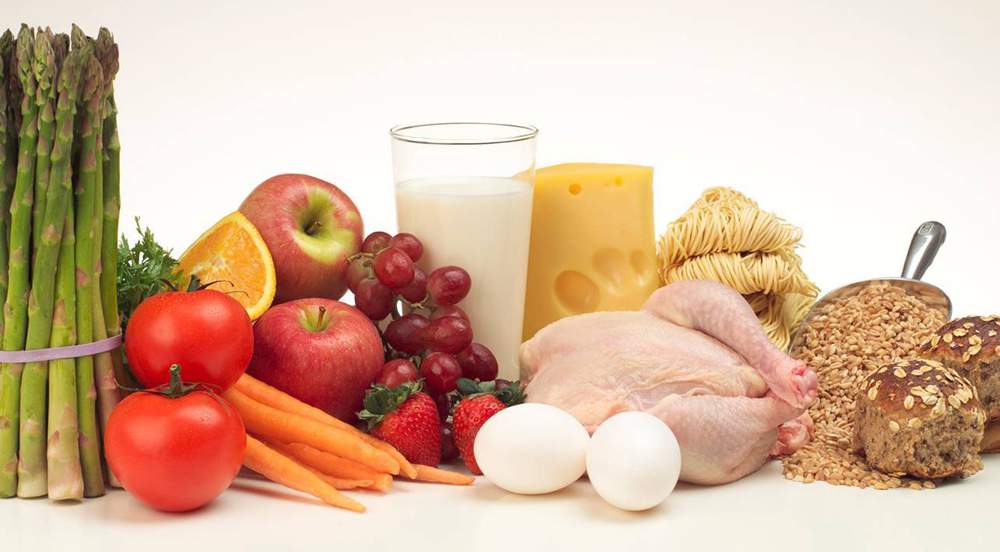
Protein
- Chicken breast
- Turkey breast
- Beef
- Salmon, Tuna, sardines…
- Egg whites
- Tempeh
- Tofu
- Chickpeas
Carbs
All of these include at least 10% of protein and some go considerably higher
- Quinoa (has a lot of protein too)
- Millet grain
- Brown rice
- Buckwheat
- Corn
- Beans (very rich in protein as well)
- Peas
- Lentils (these have considerably lower percent of carbs, but still keep a similar percentage of protein as grains - which makes them ideal for dinner)
- Whole grain pasta (spaghetti and macaroni)
- Oat flakes
- Potatoes
- Sweet potatoes (way less in carbs which makes them ideal for dinner)
Fats
You will satisfy your daily intake from your main meat protein sources which contain a decent percentage of fat (not always the healthiest variety though, but don’t worry).
Your main carb sources include some fat percentage as well.
- Fish - rich in omega fats - highly recommended.
- All nuts such as hazelnuts, walnuts, almonds, peanuts (neither heated nor processed in any way. Lots of protein included)
- Seeds such as chia seed, flax seed, sesame seed, pumpkin seed, sunflower seed (about two teaspoons combined daily total. Quite a lot of protein in there as well)
- Olive oil (when vegetables feel unbearably blunt and dry. Try not to go more than 1-2 tablespoons per day. Less if you are after fast weight-loss)
- Peanut butter (limit to one teaspoon per day. Quite a lot of protein in there as well)
- Tahini (same as peanut butter)
- Jerky or fat free bacon (Lots and lots of protein, but quite a lot of fat as well. Not the healthy kind either. But you can still consume these once per week – few bites – when workouts are extra challenging)
- Avocado (limit to one fruit per week)
Veggies as side dish
- Cabbage, broccoli, cauliflower, kale, Brussel sprouts (these contain I3C – ideal for speeding up fat burning processes)
- Any and every vegetable you can find (eat more of these to feel less hungry)
Fruits
All contain natural sugar, so you’d want to limit consumption to one or two items per day. Ideal for snacks, along with nuts.
Keep it simple, plan upfront, and experiment as you go along. Don’t be too harsh on yourself, and make the transition slow rather than dramatic. Again - most people overestimate what they can do in a week, but grossly underestimate what they can do in a month.
Bon Appétit!
You're currently offline. Some actions will not work while offline.
